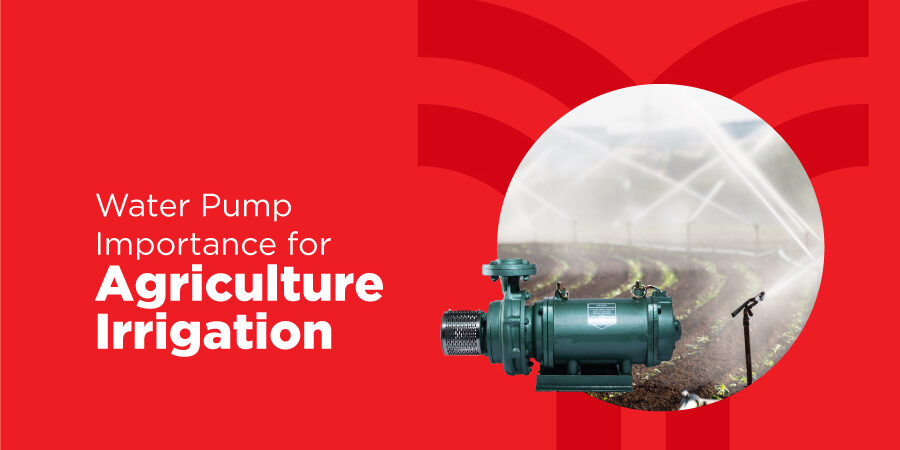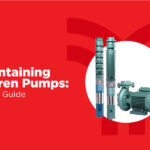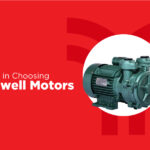Importance of water pump for agriculture irrigation
Water pumps are important for irrigation systems in agriculture. The natural water source that their property provides is essential for farmers and thus water pumps are therefore necessary for a healthy environment. Farmers can easily provide the right amount of water to their crops in every part of their field by using a submersible sewage pump. A crop’s growth can be greatly influenced by a number of important factors, including temperature, pressure, and amount of water. The water pump system in modern agriculture needs a variety of components to successfully cultivate.
The applications of agricultural pumps: Among the various uses for agricultural pumps are the following, however, they are not exclusive to them:
- Agricultural management, including dewatering, harvesting, and floor and row irrigation
- Taking care of livestock, including moving drinking water and managing waste
- Catfish, crawfish, and shrimp farming are examples of aquaculture.
- Pumps are essential for various purposes like transferring water from ponds, canals, ditches and also agricultural lands for crops, livestock and for home, industry- related.
- Water intake drilling and tail-water recycling are examples of general water management practices.
- Other farming practices like controlling aquatic plants and extracting peat bogs.
Types of pumps in the agriculture sector:
There are various types available in the market where you can get sufficient help from the manufacturers and experts in choosing the right one for your farmland. However, here are some of the common types of water pumps used in the agricultural sector.
- The type of pump used in agriculture, especially for irrigation, is the centrifugal pump. It drives fluid through the pump using the support of a revolving impeller. With the use of centrifugal force, the impeller pulls the fluid and forces it out through the discharge valves.
The impeller of a centrifugal pump transfers kinetic energy from the motor to the fluid by moving and these pumps are usually immersed in water. Electrical energy, which may come from a variety of sources like the public power grid, solar panels, wind turbines, or hydroelectric generators, is typically used to operate these pumps. - A submersible water pump is an instance of a centrifugal pump that is usually placed in a pond, lake, or borehole below the level of the water. These pumps don’t need to be charged because they are made with waterproof parts. Depending on how many impellers they have, submersible pumps can be either single- or multi-stage. Higher pressures and flow rates can be produced using multi-stage submersible pumps, which are made up of multiple single-stage pumps connected in series.
- While they can also be run on hydro, wind, or solar energy, submersible pumps are usually powered by electrical energy. These pumps are known for their excellent effectiveness and reliability and are especially useful in situations when the water supply is low.
- It exists to install turbine pumps underwater and also above ground. They frequently work with ponds, lakes, and wells. The most common kind is the vertical turbine pump. They are less efficient than submersible pumps, however, turbine pumps run on electricity, though they can also be powered by solar, wind, hydro, etc. energy. Usually, they can be utilized when the water supply is insufficient.
- Since end-suction centrifugal pumps are effective and adaptable to different pressures and flow rates, they are also frequently used in irrigation. They are sometimes referred to as single-stage pumps since the fluid’s velocity is increased by a single impeller in each pump. In small to medium irrigation applications, such as watering lawns, gardens, or small agricultural fields, end-suction pumps are frequently utilized. They can be powered by diesel or electric engines and are simple to install, maintain, and repair
- In situations when the fluid level is too low for other types of pumps to operate effectively, jet pumps—also referred to as hydraulic lifts or surface pumps—are frequently used to pump water from wells or other water sources. Through the use of a suction pipe, they raise water through a partial vacuum created by their high-speed water jet. They have a lower flow rate and are less effective than other pumps, but they can still be helpful in some circumstances where other pumps lack an option.
Conclusion: When choosing water pumps, you can go for the centrifugal pumps, the most common type used in irrigation and other industries due to their simple design, minimal risk of leaks, and low friction loss. A vital part of irrigation is pumping. Therefore, it’s essential to select the right kind of agricultural water pump since these are useful tools for farmers. For water resources underwater, then you can prefer vertical open well submersible pumps and turbine pumps. Since there are certain limitations in using end-suction centrifugal and jet pumps, it is suitable for certain scenarios. However, different types of pumps have unique advantages which are suitable for various purposes.


